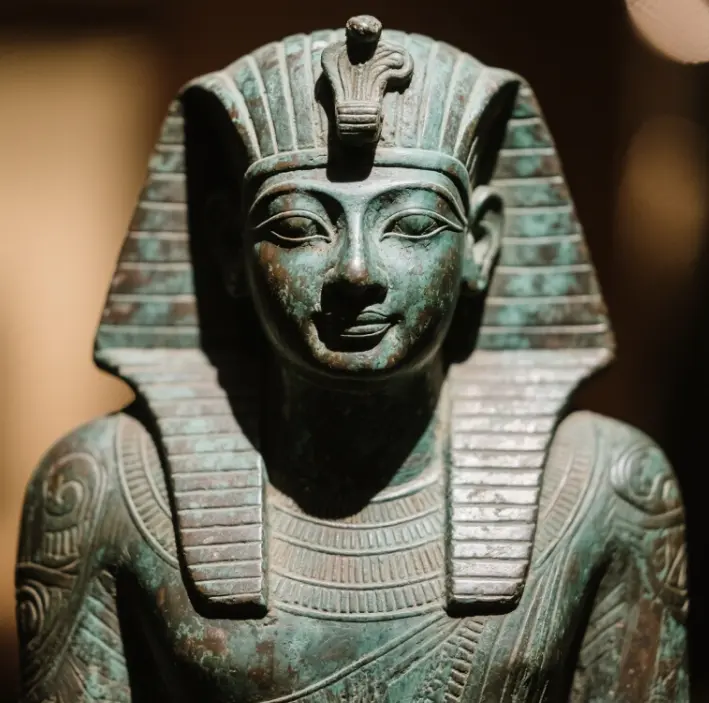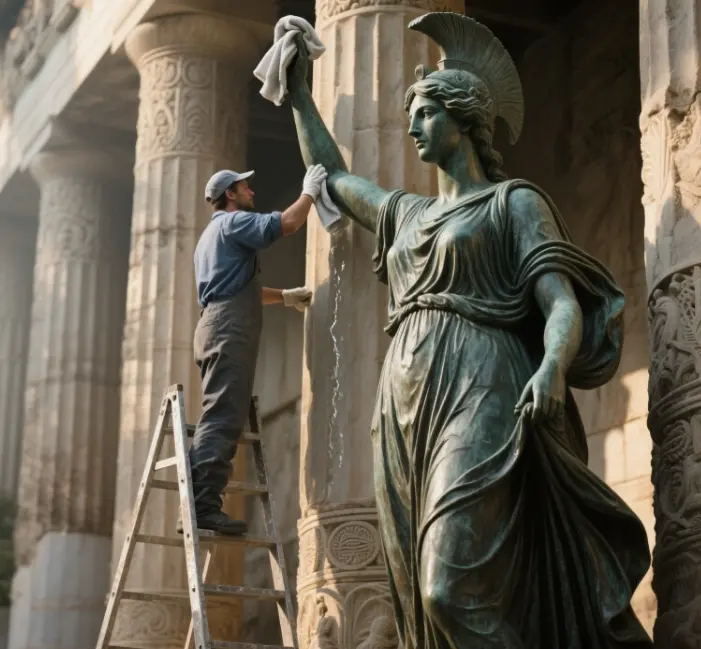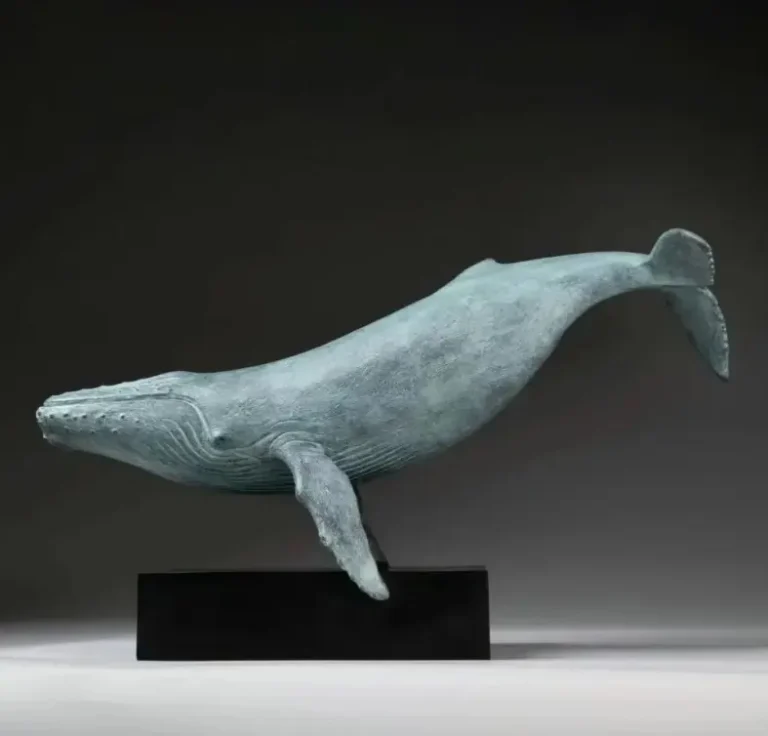Bronze sculpture has a super long history, and today we’ll take a good look at the historical background of bronze sculpture, how it’s identified, how it’s made, how it’s displayed, and how it’s influenced contemporary art, as well as the incredible 12 most famous bronze statues in the world.
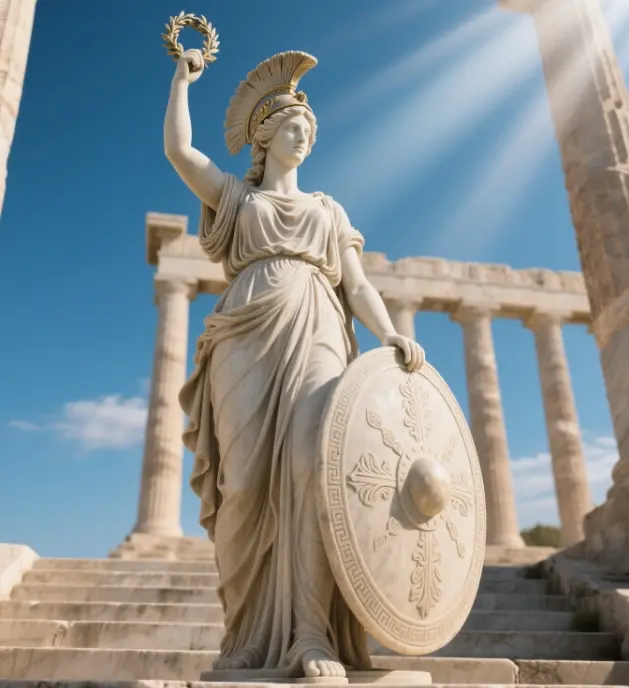
Development of Bronze Sculpture in B.C.
Bronze is an alloy of copper and tin and other metals cast in certain proportions, and it appeared in the Two River Valley and Egypt la around 2500 BC. Later on, when the Persian Empire expanded, bronze casting technology spread eastward to India and then through the Aegean Sea to mainland Greece. Archaeologists in the Peloponnese found a statue of a warrior from around 450 BC wearing a crown and holding a spear. This shows that Greek craftsmen were already able to cast a 2-meter-high statue in one go. Bronze can be smelted many times, and its mechanical properties are better than marble, which makes it particularly fine when it comes to deep textures and facial expressions. This advantage also provided the material basis for the later Roman Empire to copy the classic Greek sculpture.
Bronze vs.
Marble
Marble is more fragile and more suitable for static seated sculptures. Bronze, on the other hand, is malleable and can show the form of an athlete taking a leap, as well as a shift in the center of gravity of the whole body.
Ivory + Gold Leaf Combination
A statue like the Olympian Zeus (actually a statue of Zeus) is representative of this combination, though it is not resistant to moisture.
Wood, Clay
Wood and terra cotta are cheaper, but they lack constancy and are not very memorable.
Artistic Achievements in Sculpture
From the Greek to the Roman era, bronze statues promoted the human anatomy and dynamic aesthetics to the “highest level”. Look at the sculpture, the abdominal muscles are slightly open, one by one the beard is very clear, fingers and nails are also clearly visible. Because of this, the later Renaissance sculptors all take the bronze statue as a “living textbook”.
The 12 most famous bronze statues in the world
Athena Victory (Nike of Paionios, 450 BC, Acropolis)
Athena stands on a high pedestal in the south wing of the Nike of Paionios, a bronze statue roughly 2.1 meters tall, cast by Paionios using the lost-wax method. The goddess treads gently on the debris of a battleship, her thin dress clinging to her body and fluttering in the wind, her unfurled wings shaped in a forward-leaning motion, and her face, with a smile on it, is particularly subdued. Its delicate portrayal of texture and precise whole-body weight shift is considered the pinnacle of classical Greek kinetic sculpture and is now on display at the Louvre.
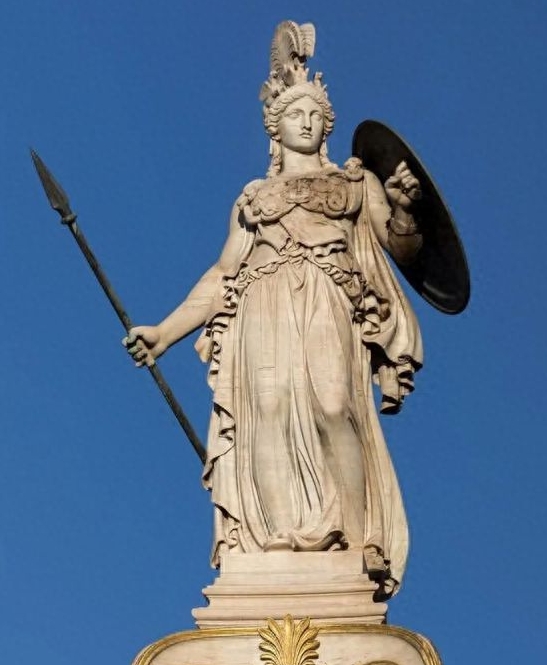
Discus Thrower Replica (Discobolus, Vatican Museums)
The prototype was a bronze statue of an athlete created by Milon in 450 BC, although the original has since disappeared. The one that exists now is a marble repousse, 1.55 meters high. This replica follows exactly the posture of the bronze original: the athlete rotates his arms to build up strength, the muscles of his chest and shoulders are tensed, his head is tilted sideways, and his eyes are gazing in the direction of the discus, demonstrating the Hellenistic period’s quest for proportions and dynamism, and it is one of the popular replicas in the museum.
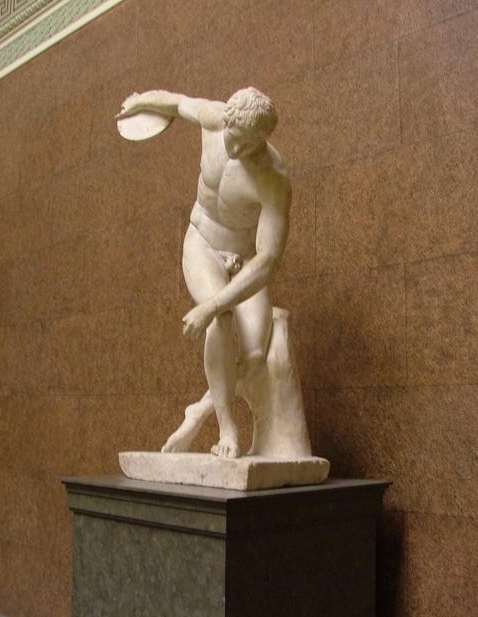
Capitoline Wolf, Mount Capitol (Rome)
This bronze statue, 75 cm high, depicts the she-wolf nursing Romulus and Remus, and it symbolizes the myth of the founding of Rome. The she-wolf’s ears are perked, her teeth are bared, and her muscles are tightly etched; the two children below are Renaissance additions. An inscription on the marble base records its origins and the legitimacy of the kingship, giving the statue both political allegory and artistic value, and also serving as a visual source for the Roman coat of arms.
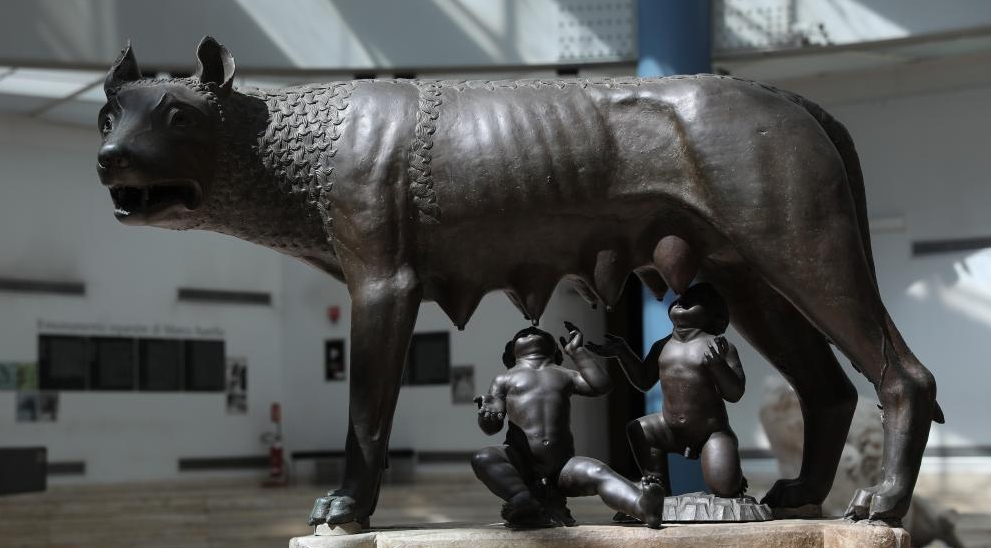
Alexander the Great on Horseback (Thessaloniki, 1973)
The statue, which is bronze in its entirety, 8 meters high and weighing about 3 tons, was cast by the sculptor Papasaras and stands on the promenade. The monarch raises his right arm to hold his sword, the front hooves of his warhorse are in the air, and the effect of the sea breeze is portrayed by the fluttering mane and tail and the tumbling cape. The chronology of the conquests is engraved on the pedestal, symbolizing the spirit of conquest and the pride of the Greek nation; at night when the light shines on it, it shows the hero’s grandeur even more.
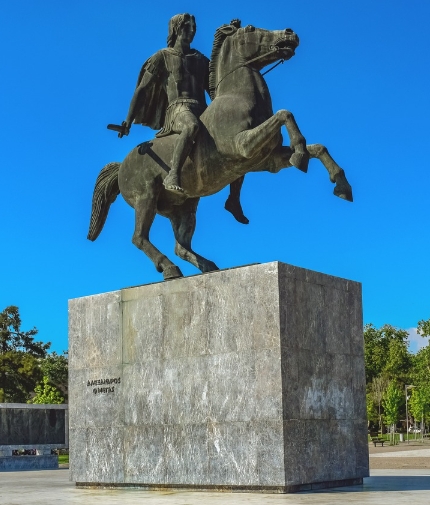
Four War Horses in St. Mark’s Square (4th century B.C., Venice)
This group of bronze sculptures was taken by the Crusaders from Constantinople to Venice, and now the originals are kept indoors in the St. Mark’s Museum, while the ones in the piazza are copies. Each horse is 2.3 meters high, with erect ears, quite eyes, and ample muscles; they move in a uniform manner, but each has its own personality. They witnessed the alternation of Byzantine and Venetian sea power, and are the earliest large bronze animal statues in Europe.
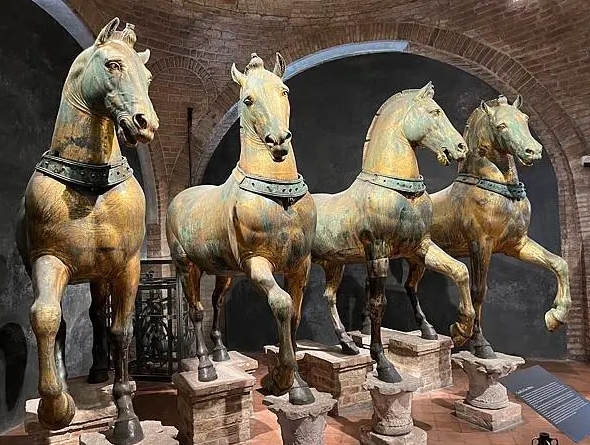
Rodin, The Thinker (1904, Musée Rodin, Paris)
Originally part of The Gates of Hell, The Thinker was cast independently as a 2-meter-high bronze statue. Its athlete-like taut muscles express a contemplative posture: the head rests on the chin with a fist, the muscles of the back bulge, and light and shadow crisscross over it. Replicas of it can be found in museums and squares in many places, and it became a symbol of modern philosophy and human introspection, as well as a reflection of Rodin’s fusion of the classical and the realistic.

Bronze miniature of Michelangelo’s David (1504, Florence)
The Renaissance workshop turned and cast the miniature version, 1.25 meters high, as soon as the marble original was finished. The young shepherd clutches the stone-throwing bag, the weight of his whole body shifting forward, his muscles and veins showing life. The bas-relief on the pedestal is engraved with the head of Goliath, echoing the image of David, symbolizing freedom and the glory of the city, and the bronze statue has become a model for diplomatic gifts.
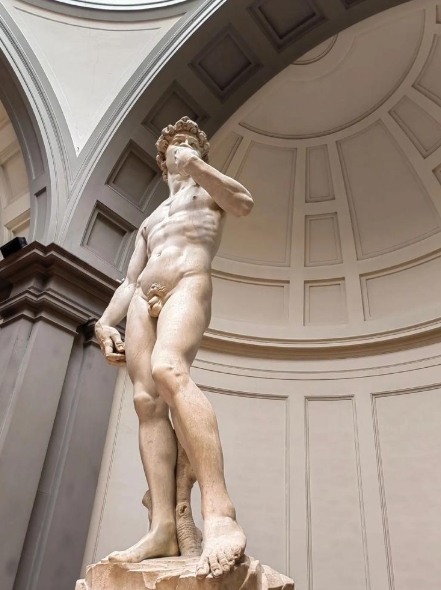
Statue of Liberty (1886, New York)
Designed by Bartholdi, the Statue of Liberty is a bronze skin attached to a steel frame structure, 46 meters high, with a torch section 8 meters high and weighing 14 tons. The copper surface has been oxidized by the sea breeze turning it green. The statue holds the torch aloft in its right hand and the Declaration of Independence in its left arm, and the inscription on the pedestal proclaims democratic freedom. Although it is not a pure bronze statue, it is one of the world’s greatest monuments because of its size and symbolism.
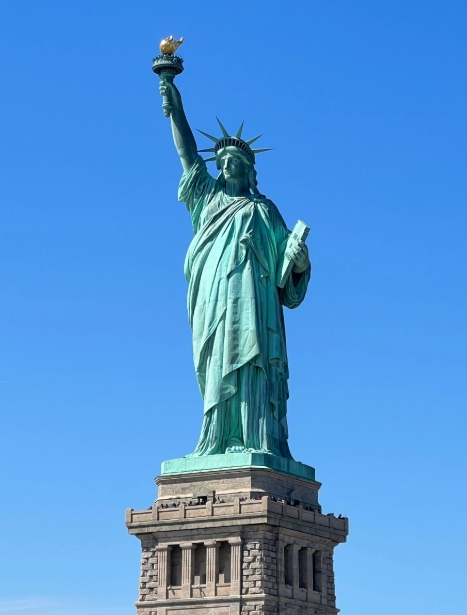
Peter the Great on Horseback (“The Bronze Horseman”, 1782, St. Petersburg)
This statue stands in the Hermitage Square on a granite base weighing 1,250 tons, and the bronze statue is 13 meters high. The Tsar controls his horse with his head held high and crosses a cliff, the serpentine yoke is broken by the horse’s hooves, symbolizing the breaking of the yoke of despotism. The sculptor Falcone used supports to lift the horse’s 8-meter front hooves off the ground, a marvel of engineering and Russian reformist ambition that was made even more famous by the poet Pushkin, who wrote a poem about it.

The Victory of Samothrace (Louvre Bronze Reproduction)
This replica was cast in lost wax based on 3D scans of the missing original, with a wingspan of almost 3 meters. The goddess stands at the bow of the ship, her thin dress clinging to her body, outlining the dynamics of leaning forward, as if the sea breeze and the waves of the water had been frozen into an eternal moment. The watery marble and bronze of the base create a strong material contrast, perfectly representing the speed and tension of Hellenistic sculpture.
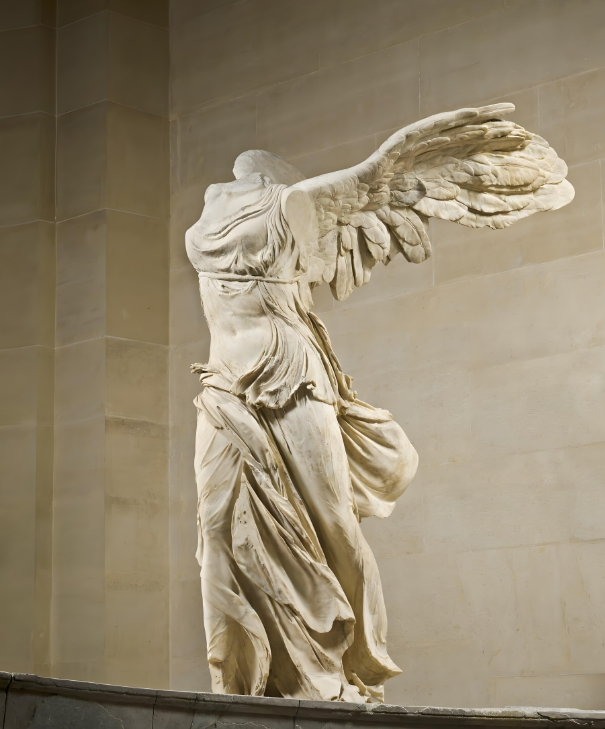
Double statue of warriors from Riace (National Archaeological Museum of Italy, 5th century B.C.)
Recovered from the bottom of the Calabrian sea in 1972, these two bronze statues are so well preserved that they have been hailed as a textbook of sculpture of the human body: statue A, with its slightly curled beard, and statue B, with its battle helmet, are both in alert postures, with the center of gravity of their bodies misplaced. Their silver-embedded eyes and ivory teeth are particularly realistic, and the museum displays them in thermostatic nitrogen cabinets to prevent copper disease from eating away at them.
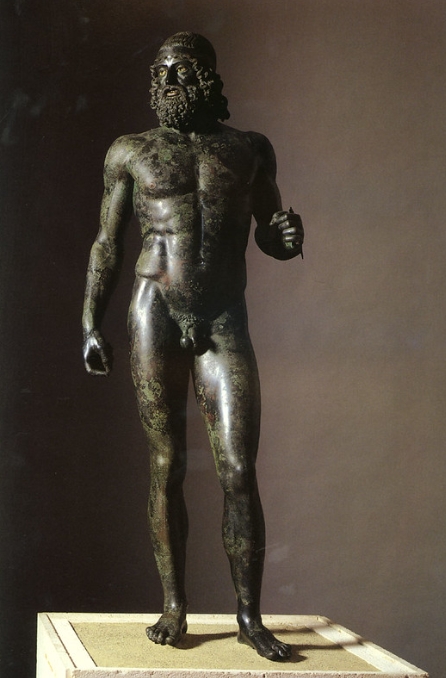
Colossus of Apollo at Alexandria (legend, 3rd century BC)
Recorded to be 40 meters high, this colossal statue of thin bronze plates clad in wooden bones stood next to the lighthouse, the patron saint of navigation, though it was later destroyed by an earthquake. The surviving fragments show a 1.5-meter-wide head with a curled beard and a crown, and the sculptor skillfully distributed the weight of the body to protect it from the sea winds. If the restoration project comes to fruition, the statue will once again showcase the magnificence of Greek art.
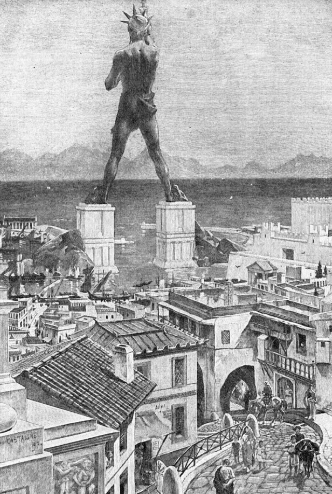
How to identify the authenticity of bronze sculpture?
Common Replicas of Bronze Sculptures
Museum stores often sell miniature replicas of A.D. masterpieces, which are molded in silicone and artificially aged on the surface. Many enthusiasts are easily confused by the “patina” on the surface of these statues.
From the identification of bronze sculpture imitation
- Metallographic section: through microscopic observation of tin, lead distribution to determine.
- Thermoluminescence: detect the age of the oxide layer.
- Comparison of the original residual sand core composition: to confirm whether it is made with the ancient method of lost wax method.
Expert advice on art appraisal
- Check the complete chain of transmission: see if the process of transmission of this sculpture is complete and reasonable.
- Pay attention to whether the carving marks match the tools of the time: the carving tools of different times leave different knife marks.
- If necessary, ask an independent laboratory to issue a genealogical report: let a professional laboratory to give a professional identification report.
What is the production process of bronze sculpture?
The basic steps of casting
- Shape the clay or plaster mold: first make a model of the sculpture.
- Cover the wax layer to form a “hollow”: cover the wax layer on the model to make a hollow appearance.
- Apply refractory clay on the outside and burn off the wax after drying: Apply refractory clay on the outside of the wax layer and burn off the wax after drying.
- Pour in 1200 ℃ copper liquid, cool down and smash the shell: Pour in 1200 ℃ copper liquid, wait for cooling and smash the outer shell off.
- Welding, polishing, coloring, complete the process of carving: the final welding, polishing, and then make the color, the sculpture is complete.
The combination of sculpture and bronze
Since the Renaissance, artists have often found shapes in marble and enlarged them by casting them in bronze. For example, in 1501 – 1504, Michelangelo completed the stone sculpture of David in Florence, and then authorized his disciples to cast a bronze version, which was used as a diplomatic gift for the city-state.
Factors affecting the quality of bronze sculpture
- Alloy ratio: If the content of tin is greater than 12%, the bronze tends to become brittle.
- Pouring temperature: If the pouring temperature is too low, the problem of “cold segregation” will arise.
- Thickness difference of the casting: The thickness difference of the casting needs to be constant between 5 – 10 mm.
Bronze Sculptures for Display in Museums
Protection and maintenance of sculpture
- Control temperature 18 – 22 ℃, humidity 50 – 55%: Control the temperature at 18 – 22 ℃, humidity at 50 – 55%, which can protect the sculpture.
- Prohibit hand touching: there are salts in human fingerprints, which will corrode the copper layer.
- Restore dull luster with microcrystalline wax treatment every 5 years: Treating the sculpture with microcrystalline wax every 5 years will restore its luster.
Sculpture exhibitions in museums
The Louvre, the British Museum in London and the Metropolitan Museum of Art in New York often feature “period sculpture”, following the timeline of BC – medieval – modern times; darkening the niches and supplementing them with spot LEDs highlights the sculpture’s silhouette.
How to appreciate the art of sculpture
Our audience can start from the sculpture’s head dynamics, muscle twists and turns and the shift of the whole body’s center of gravity, to figure out how the sculptor uses a moment to freeze eternity.
What is the influence of bronze sculpture on contemporary art?
How do modern artists draw on bronze sculpture?
Rodin, who prized “incomplete beauty,” incorporated the Greek tradition of the severed arm into The Walking Man.
Argentinian sculptor Caterine recreated Athena’s defeat of the serpent in a 3D-printed wax model.
Bronze sculpture in public art
Bronze is often chosen for large monuments because it is both weather resistant and easy to maintain. Canberra’s statue of the Australian and New Zealand Army Corps, for example, is 8 meters tall, and it serves as both a reminder of the war and a coordinate for the city.
Future trends in sculpture
- Digital modeling and robotic polishing will speed up creation: modeling with numbers and polishing with robots can make creation faster.
- Detachable pre-cast parts for global exhibition: The sculpture can be made into detachable pre-cast parts, which is convenient for global exhibition.
- Cross-media integration with fiber optics and LEDs to reshape the boundaries of the “bronze × technology” combination: the integration of bronze sculptures with fiber optics and LEDs will create more new art forms.
From the sculpture of the Sumerian Little Priest in 2500 BC to the 13-meter-high statue of Peter the Great on horseback, bronze sculpture has witnessed the rise of human civilization and the change of aesthetics. It has experienced the glory of Rome, the conquest of Persia, was born in the workshops of the Renaissance, and appeared on the street corners of modern cities, becoming a masterpiece of art that connects the ancient and the modern and a symbol of artistic achievement. Whether it’s the delicate statue of a goddess standing in a museum gallery or the statue of a giant gazing up at the stars in a square, every bronze statue reminds us that metal may decay, but human imagination will never be extinguished. Families, let’s go together to feel the charm of bronze sculpture!

